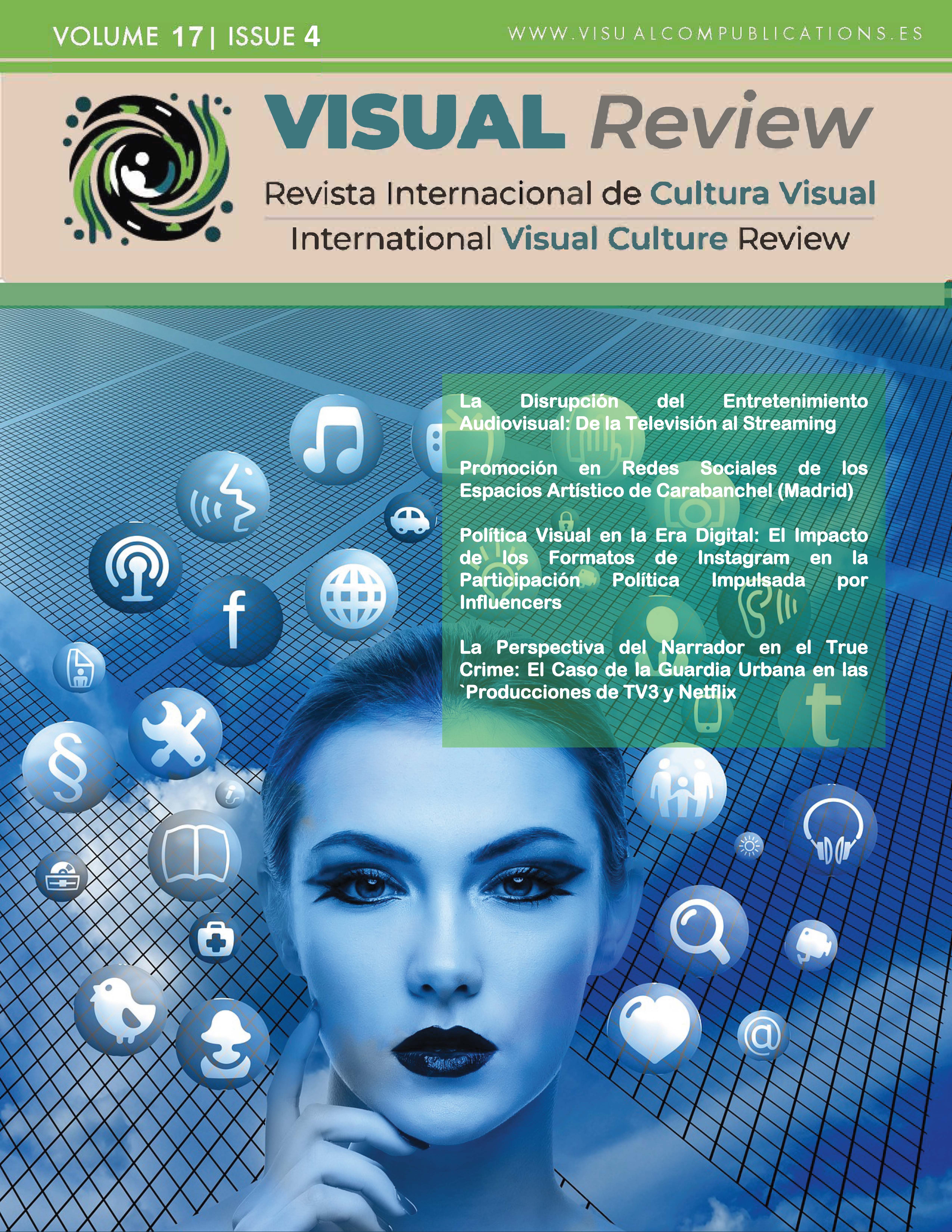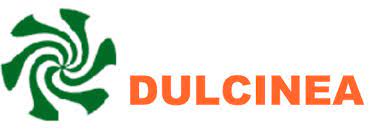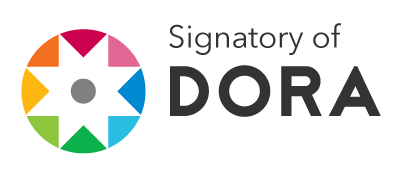Política Visual en la Era Digital
El Impacto de los Formatos de Instagram en la Participación Política Impulsada por Influencers
DOI:
https://doi.org/10.62161/revvisual.v17.5860Palabras clave:
Influencers, Redes sociales, Interacción, Participación política, Contenido digital, Líderes de opinión, Formatos visualesResumen
En el proceso de consolidación de Instagram como plataforma visual, los influencers políticos emergen como nuevos agentes en la creación de contenido político. A partir del estudio de 750 publicaciones de 30 influencers políticos relevantes en España, esta investigación analiza cómo las métricas de interacción influyen en los formatos Reels y Posts, superando los promedios de referencia (Sehl y Mikolajczyk, 2024).La elección entre formatos no solo moldea el tipo de contenido político visual difundido, sino que también configura las prácticas de consumo y participación política de las audiencias jóvenes, subrayando la importancia de las métricas de interacción en el éxito del contenido digital.
Descargas
Estadísticas globales ℹ️
|
374
Visualizaciones
|
190
Descargas
|
|
564
Total
|
|
Citas
Abidin, C., Lee, J., Barbetta, T & Miao, WS (2021). Influencers & COVID-19: reviewing key issues in press coverage across Australia, China, Japan, & South Korea. Media International Australia Incorporating Culture & Policy, 178(1), 114–135. https://doi.org/10.1177/1329878X20959838
Akyon, C., & Kalfaoglu, T. (2019). Detection of fake followers in Twitter using decision tree classification. 2019 27th Signal Processing and Communications Applications Conference (SIU), 1-4. https://doi.org/10.1109/SIU.2019.8806510
Barrio Romera C. (2018). Reseña/Review (Manovich, Lev, "Instagram and contemporary image", California Institute for Telecommunication and Information & The Graduate Center, City University of New York (CUNY): Cultural Analytics Lab, 148 págs., 2017). Teknokultura. Revista de Cultura Digital y Movimientos Sociales, 15(1), 181-183. https://doi.org/10.5209/TEKN.58488
Berners-Lee, T., & Fischetti, M. (2000). Weaving the Web: The Original Design and Ultimate Destiny of the World Wide Web by Its Inventor. Harper.
Bode, L., Vraga, E. K., Borah, P., & Shah, D. V. (2014). A new space for political behavior: Political social networking and its democratic consequences. Journal of Computer-Mediated Communication, 19(3), 414-429. https://doi.org/10.1111/jcc4.12048
Bor, D., Lee, B. S., & Oughton, E. J. (2023). Quantifying polarization across political groups on key policy issues using sentiment analysis. arXiv.org. https://arxiv.org/abs/2302.07775
Buckingham, D. (2019). The Media Education Manifesto. Polity Press.
Casaló, L. V., Flavián, C., & Ibáñez-Sánchez, S. (2020). Influencers on Instagram: Antecedents and consequences of opinion leadership. Journal of Business Research, 117, 510-519. https://doi.org/10.1016/j.jbusres.2020.06.037
Chadwick, A. (2017). The Hybrid Media System: Politics and Power. Oxford University Press.
Cheng, Z., Chen, J., Peng, R.X. y Shoenberger, H. (2023). Social media influencers talk about politics: Investigating the role of source factors and PSR in Gen-Z followers’ perceived information quality, receptivity and sharing intention. Journal of Information Technology and Politics. https://doi.org/10.1080/19331681.2023.2173700
Conroy, M., Feezell, J. T., & Guerrero, M. (2012). Facebook and political engagement: A study of online political group membership and offline political engagement. Computers in Human Behavior, 28(5), 1535-1546. https://doi.org/10.1016/j.chb.2012.03.012
Cotter, K. (2019). Playing the visibility game: How digital influencers and algorithms negotiate influence on Instagram. New Media & Society, 21(4), 895–913. https://doi.org/10.1177/1461444818815684
De Veirman, M., Cauberghe, V., & Hudders, L. (2017). Marketing through Instagram influencers: The impact of number of followers and product divergence on brand attitude. International Journal of Advertising, 36(5), 798-828. https://doi.org/10.1080/02650487.2017.1348035
Dekoninck, H., & Schmuck, D. (2022). The Mobilizing Power of Influencers for Pro-Environmental Behavior Intentions and Political Participation. Environmental Communication, 16(4), 458–472. https://doi.org/10.1080/17524032.2022.2027801
Gaspar, R., Pedro, C., Panagiotopoulos, P., & Seibt, B. (2019). Beyond positive or negative: Qualitative sentiment analysis of social media reactions to unexpected stressful events. Computers in Human Behavior, 56, 179-191. https://doi.org/10.1016/j.chb.2015.11.035
Gil de Zúñiga, H., Jung, N., & Valenzuela, S. (2012). Social media use for news and individuals' social capital, civic engagement, and political participation. Journal of Computer-Mediated Communication, 17(3), 319-336. https://doi.org/10.1111/j.1083-6101.2012.01574.x
Gonzalez-Carrion, E.-L. ., & Aguaded, I. . (2020). Engagement y evolución de instagramers hispanohablantes de moda. Revista Latina De Comunicación Social, (77), 231–252. https://doi.org/10.4185/RLCS-2020-1456
Highfield, T. (2016). Social Media and Everyday Politics. Polity Press.
IAB Spain (2024). Estudio de redes sociales 2023. https://iabspain.es/estudio/estudio-de-redes-sociales-2023/
Influencer Marketing Hub. (2023). The state of influencer marketing 2023. https://influencermarketinghub.com/ebooks/Influencer_Marketing_Benchmark_Report_2023.pdf
Kim, Y., Hsu, S. H., & Gil de Zúñiga, H. (2017). Influence of social media use on discussion network heterogeneity and civic engagement: The moderating role of personality traits. Journal of Communication, 63(3), 498-516. https://doi.org/10.1111/jcom.12047
Kim, Y., Russo, S., & Amnå, E. (2017). The longitudinal relation between online and offline political participation among youth at two different developmental stages. New Media & Society, 19(6), 899-917. https://doi.org/10.1177/1461444815624181
Kolsquare. (2024). Influencer marketing in Spain 2024. Kolsquare Blog. https://www.kolsquare.com/en/blog/influencer-marketing-in-spain-2024-low-prices-and-new-regulations-to-define-the-market
Marcelino Mercedes , G. V., & Taboada, M. (2014). Redes sociales basadas en imágenes como herramienta de comunicación museística. Museos y centros de arte Moderno y Contemporáneo de España en Pinterest e Instagram. adComunica. Revista científica de estrategias, tendencias e innovación en comunicación, (8), 139-168.
Marwick, A. (2015). Instafame: Luxury selfies in the attention economy. Public Culture, 27(1), 137-160. https://doi.org/10.1215/08992363-2798379
Mosseri, A. (2022). Building a safer Instagram for our youngest community members. Instagram Blog. https://bit.ly/42voMPq
Munoz, M. (2021). Influencers-activistas: La evolución del ciberactivismo en España. Revista de Comunicación Política, 8(2), 123-145. https://doi.org/[DOI no disponible]
Myers, D. G. (1995). Psychology (4.ª ed.). Worth Publishers.
Riedl, M. J., Vorderer, P., & Klimmt, C. (2021). The role of parasocial relationships and social media use in adolescents’ political engagement. Media Psychology, 24(5), 1-26. https://doi.org/10.1080/15213269.2019.1650884
Riffe, D., Lacy, S., Watson, B., & Fico, F. (2019). Analyzing Media Messages: Using Quantitative Content Analysis in Research (4.ª ed.). Routledge.
Santos, R (2022) Why does Instagram keep trying to be tiktok? VICE.[Availableat:https://www.vice.com/en/article/y3vayk/instagram-tiktok-video-meta].
Schmuck, D., Hirsch, M., Stevic, A., y Matthes, J. (2022). Politics – Simply Explained? How Influencers Affect Youth’s Perceived Simplification of Politics, Political Cynicism, and Political Interest. The International Journal of Press/Politics, 27(3), 738-762. https://doi.org/10.1177/19401612221088987
Palacios López M., Bonete Vizcaíno F. y Gelado Marcos R. (2023). New agents of mass disinformation. Analysis of the publications produced by Spanish political influencers on Instagram. Estudios sobre el Mensaje Periodístico, 29(4), 919-932. https://doi.org/10.5209/esmp.88576+
Palacios López, M., & Bonete Vizcaíno, F. (2024). Influencers Políticos en Instagram: Los nuevos agentes digitales de la participación política en España. RECERCA. Revista De Pensament I Anàlisi, 29(2). https://doi.org/10.6035/recerca.7657
Palacios-López, M., Bonete-Vizcaíno, F., & Vázquez-Barrio, T. (2025). Impacto de los influencers políticos en la configuración de la opinión pública y la participación política en Instagram. Revista De La Asociación Española De Investigación De La Comunicación, 12(23), raeic122303. https://doi.org/10.24137/raeic.12.23.3
Pérez-Curiel, C., & Limón-Naharro, P. (2019). Influencers políticos. Un estudio de la marca personal de Donald Trump en Twitter y su impacto en los medios y usuarios. Communication & Society, 32(1), 57-75. https://doi.org/10.15581/003.32.1.57-75
Sehl, K., & Mikolajczyk, K. (2023). How to calculate engagement rate: A complete guide for marketers. Hootsuite Blog. https://bit.ly/3WEo5zH
Suuronen, A., Koivula, A., & Kunelius, R. (2022). Greenfluencers: The role of social media influencers in promoting environmental awareness and sustainable consumption among young adults. Journal of Environmental Media, 3(1), 45-67. https://doi.org/10.1386/jem_00037_1
Theocharis, Y., & van Deth, J. W. (2018). Political Participation in a Changing World: Conceptual and Empirical Challenges in the Study of Citizen Engagement. Routledge. https://doi.org/10.4324/9780203728673
Wilson, E. J., & Sherrell, D. L. (1993). Source effects in communication and persuasion research: A meta-analysis of effect size. Journal of the Academy of Marketing Science, 21(2), 101-112. https://doi.org/10.1177/0092070393212001
Webgrafía
Ecorepublicano. [@ecorepublicano]. (2024, 21 de mayo). “Buenos días”. [Publicación en Instagram]. https://www.instagram.com/p/C7Lttb5RY1O
ellibrepensador [@ellibrepensador]. (2024, 21 de marzo). “Negacionistas de la inteligencia.⠀El 31 de julio de 1931 José Ortega y Gasset se dirigió a los representantes de las Cortes Constituyentes para pedirles lo siguiente: «Nada de violencia en el lenguaje o en el ademán; hay, sobre todo, algo que no podemos venir a hacer aquí: ni el payaso, ni el tenor, ni el jabalí” [Publicación en Instagram]. Instagram. https://www.instagram.com/p/C4xo8sftK50
ellibrepensador [@ellibrepensador]. (2024, 7 de abril). El nuevo canon de belleza: "mujeres" calvas.⠀Este fin de semana nuestra Españita ofrecía un amplio catálogo de esperpentos. Desde la boda de Almeida retransmitida en directo por Telemadrid –lo cual demuestra lo urgente que es cerrar todas las televisiones públicas sin excepción– hasta cómo los mismos ciudadanos a los que el Napoleón madrileño impide circular por las calles por ser demasiado pobres y no tener un coche Eco-friendly acudían a aplaudirle efusivamente [Publicación en Instagram]. Instagram. https://www.instagram.com/p/C5dKjJMtxm9
Descargas
Publicado
Cómo citar
Número
Sección
Licencia
Derechos de autor 2025 Los autores/as conservan los derechos de autor y ceden a la revista el derecho de la primera publicación y el derecho de edición

Esta obra está bajo una licencia internacional Creative Commons Atribución-SinDerivadas 4.0.
Los autores/as que publiquen en esta revista aceptan las siguientes condiciones:
- Los autores/as conservan los derechos de autor.
- Los autores/as ceden a la revista el derecho de la primera publicación. La revista también posee los derechos de edición.
- Todos los contenidos publicados se regulan mediante una Licencia Atribución/Reconocimiento-SinDerivados 4.0 Internacional. Acceda a la versión informativa y texto legal de la licencia. En virtud de ello, se permite a terceros utilizar lo publicado siempre que mencionen la autoría del trabajo y a la primera publicación en esta revista. Si transforma el material, no podrá distribuir el trabajo modificado.
- Los autores/as pueden realizar otros acuerdos contractuales independientes y adicionales para la distribución no exclusiva de la versión del artículo publicado en esta revista (p. ej., incluirlo en un repositorio institucional o publicarlo en un libro) siempre que indiquen claramente que el trabajo se publicó por primera vez en esta revista.
- Se permite y recomienda a los autores/as a publicar su trabajo en Internet (por ejemplo en páginas institucionales o personales), una vez publicado en la revista y citando a la misma ya que puede conducir a intercambios productivos y a una mayor y más rápida difusión del trabajo publicado (vea The Effect of Open Access).













